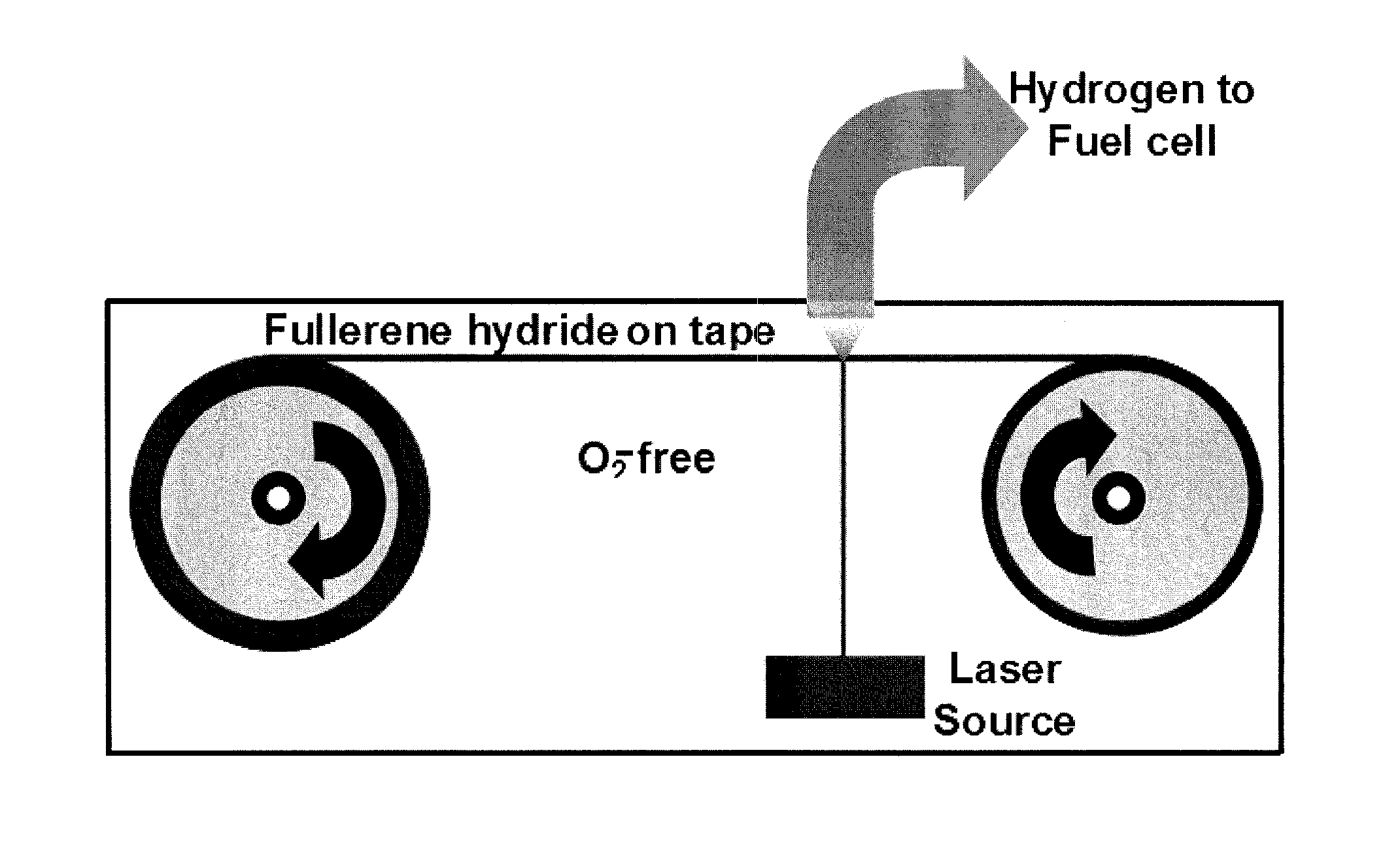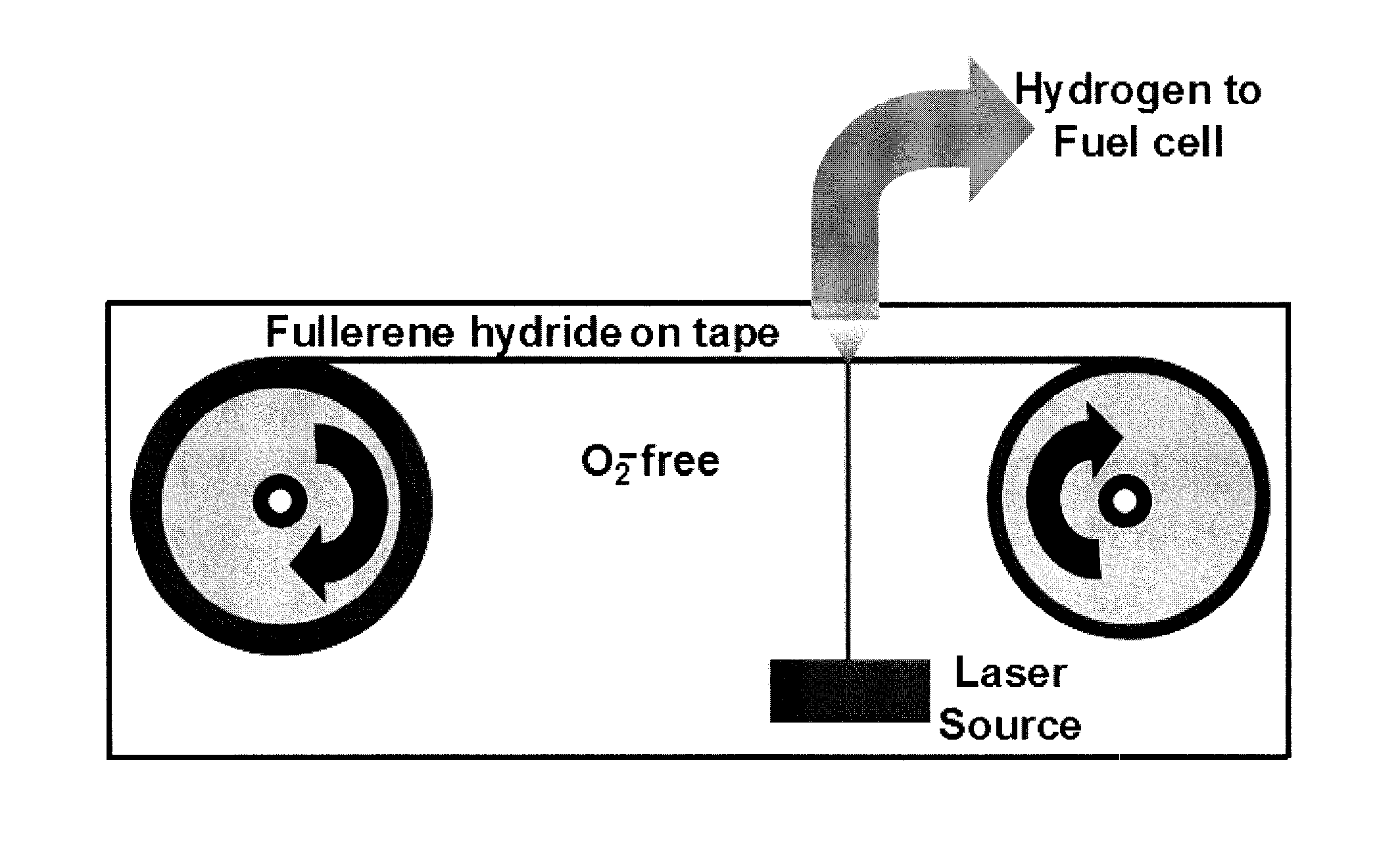Optical release of hydrogen from functionalized fullerenes as storage materials
a functionalized fullerene and hydrogen-releasing technology, applied in the field of optical hydrogen release from functionalized fullerene as storage materials, can solve the problems of inability to achieve target capacities, inability to meet the requirements of storage systems, and unattractive commercial applications of materials with reaction enthalpies of 15 to 75 kj/mole, etc., and achieve the effect of rapid hydrogen-releasing upon irradiation
- Summary
- Abstract
- Description
- Claims
- Application Information
AI Technical Summary
Benefits of technology
Problems solved by technology
Method used
Image
Examples
Embodiment Construction
[0010]Functionalized fullerenes undergo spontaneous combustion upon electromagnetic irradiation in air. However, irradiation of a material comprising hydrogen fixed fullerenes, using a radiation of sufficient intensity, allows for the controlled release of hydrogen at the site of irradiation in the absence of oxygen. The release can occur at a sufficient temperature and heat from the irradiated hydrogen fixed fullerene can be readily dissipated from the system such that the temperature does not significantly exceed the temperature required for the thermal release of the hydrogen.
[0011]The hydrogen depleted hydrogen fixed fullerene can be re-hydrogenated and reused. The hydrogenation of the depleted hydrogen fixed fullerene can be carried out by any known method including heating under a pressure of hydrogen. A catalyst can be included with the depleted hydrogen fixed fullerenes to increase the rate of hydrogenation.
[0012]The irradiation is carried out in an oxygen free environment t...
PUM
| Property | Measurement | Unit |
|---|---|---|
| temperatures | aaaaa | aaaaa |
| temperatures | aaaaa | aaaaa |
| temperatures | aaaaa | aaaaa |
Abstract
Description
Claims
Application Information
 Login to View More
Login to View More - R&D
- Intellectual Property
- Life Sciences
- Materials
- Tech Scout
- Unparalleled Data Quality
- Higher Quality Content
- 60% Fewer Hallucinations
Browse by: Latest US Patents, China's latest patents, Technical Efficacy Thesaurus, Application Domain, Technology Topic, Popular Technical Reports.
© 2025 PatSnap. All rights reserved.Legal|Privacy policy|Modern Slavery Act Transparency Statement|Sitemap|About US| Contact US: help@patsnap.com


